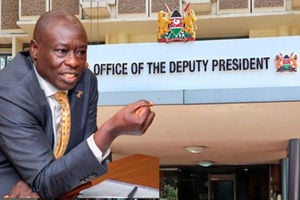Lesuuda’s Sh182bn bid to end pedestrian deaths on Kenyan roads

Samburu West MP Naisula Lesuuda.
It will cost taxpayers at least Sh182 billion to construct and maintain pedestrian walkways and cycling lanes on both sides of tarmac roads in the country if a proposed Bill becomes law.
The Kenya Roads (Amendment) Bill 2023, sponsored by Samburu West MP Naisula Lesuuda, has already been published for introduction in the National Assembly after being approved by the Budget and Appropriations Committee (BAC) that considered the feasibility of Bills guided by the prevailing financial situation in the country.
The Bill seeks to amend the Kenya Roads Act of 2007 to compel the government to construct Non-Motorised Transport (NMT), which includes walkways and cycling lanes on both sides of the entire tarmac road in the country.
Experts at the Parliamentary Budget Office (PBO), which advises parliament and its committees on fiscal matters, indicate that the Sh30.56 billion relates to the first year of implementing that NMT if the Bill is approved by MPs and assented to by the President.
In the subsequent years, the cost of implementing the NMT will increase.
Ms Lesuuda, who appeared before BAC to defend the Bill, said that the development of NMT zones in the country will reduce the number of deaths attributed to road accidents involving non-motorised road users.
“This Bill aims at providing dedicated lanes separate from motor vehicle lanes. Its implementation will promote green mobility by minimising vehicle congestion, road accidents as well as the air and noise pollution from vehicles,” Ms Lesuuda said.
The Bill seeks to amend Section 2 of the Kenya Roads Act to make it mandatory for all public roads in urban and rural areas to have lanes, walkways or tracks clearly marked for exclusive use by NMT users.
It also makes it an offence for motorists to drive on undesignated areas or non-motorised lanes that include walkways and cycling tracks.
Sh1 million fine
The offending motorists risk a Sh1 million fine or one-year jail term –or both-- depending on the motorists’ previous records.
The Bill is, however, silent on pedestrians or other non-motorised users found in non-designated areas.
Ms Lesuuda said that the proposed punitive measures are aimed at restoring order on the chaotic Kenyan roads effectively putting on notice rogue motorists with a penchant for harassing or even injuring pedestrians, cyclists and other non-motorised users like wheelbarrow operators and handcart pushers.
Currently, Kenya boasts 21,826 kilometres of tarmac and only 30 percent of them have the NMT facilities, among them Nairobi's UN Avenue.
The budget experts estimate that a kilometre of NMT facilities on both sides of the road costs approximately Sh10 million with the cost of maintenance at about 10 percent of the construction cost.
The committee expects that the cost of constructing the NMT facilities would be spread over a period of five years with annual inflation at 5 percent.
The cost is expected to increase to Sh35.292 billion in the second year of NMT implementation, Sh37.06 billion in the third year, Sh38.9 billion in the fourth year and Sh40.86 billion in the fifth year. In total, it will cost Sh182.672 billion to include the walkways and cycling paths.
Towards the end of March, Banissa MP Kullow Hassan died after he was hit by a motorcycle, adding to the statistics on the number of pedestrians killed in road accidents.
The economic survey of 2022 shows that 4,579 people were killed in road accidents in 2021 with pedestrians leading at 1,557 accounting for 34 percent of all road accident-related deaths.
Ms Lesuuda noted that the cost of constructing the facilities may be high but the country needs it.
“The cost may be high but if you look at the number of Kenyans who have died on the roads, it is worth it,” she said citing Uganda, Netherlands and Japan among others, as the countries that have embraced NMT.
The Kenya road sign manual indicates that the measures employed are to minimise the occurrence of accidents or in case of accidents to minimise the eventualities.
To minimise the occurrence of road accidents, the manual advises that the motorised and NMT be physically separated.
The proposed law clusters NMT to include cycling lanes, cycling tracks, pedestrian walkways and universal access.
Upgraded
The passage of the Bill and its signing into law will mean that all roads without non-motorised facilities will have to be upgraded.
The Bill defines non-motorised transport as all forms of travel that do not rely on an engine or motor for movement and include walking, cycling and mobility assistance devices.
Cycling lane means on-road lanes exclusively reserved for use by bicycles and wheelchairs, with clear markings separating them from other lanes used by motorised vehicles.
Pedestrian walkways include part of the road specifically reserved for use by pedestrians and are physically separated from lanes used by motorised vehicles.
“Walking short distances is the easiest means of moving from one place to another considering the traffic jams which has led to air pollution, deteriorating the urban environmental conditions as well as it being costly,” says Ms Lesuuda.





